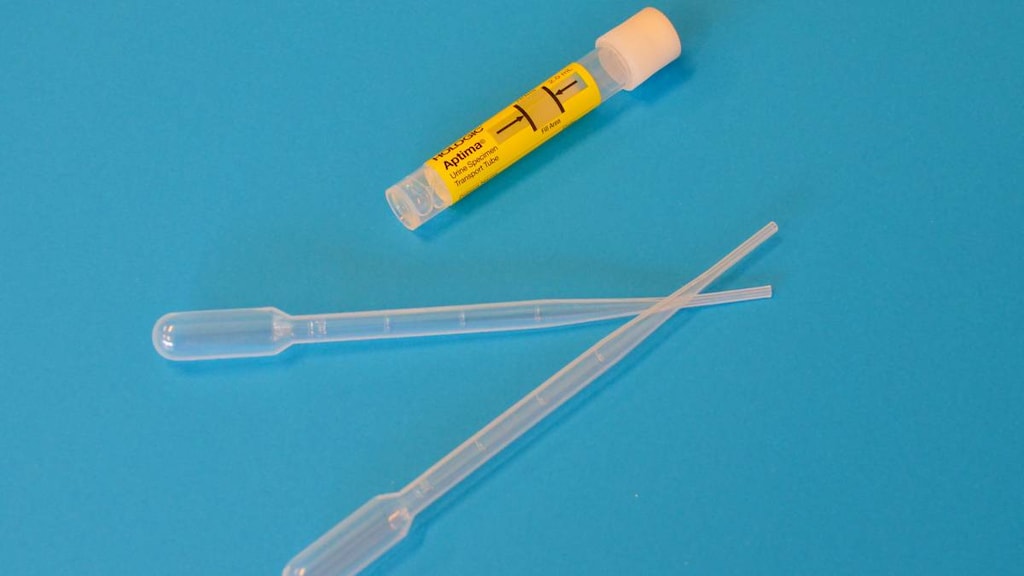Dosage Forms
Excipient information presented when available (limited, particularly for generics); consult specific product labeling.
Solution Reconstituted, Intravenous [preservative free]:
Recarbrio: Imipenem 500 mg, cilastatin 500 mg, and relebactam 250 mg (1 ea)
Pharmacology
Mechanism of Action
Imipenem: Binds to PBP 2 and PBP 1B in Enterobacteriaceae and P. aeruginosa and subsequently inhibits penicillin-binding proteins, leading to the disruption of bacterial cell wall synthesis.
Cilastatin: Renal dehydropeptidase inhibitor that limits renal metabolism of imipenem.
Relebactam: Beta-lactamase inhibitor that protects imipenem from degradation by certain serine beta-lactamases (eg, Sulhydryl Variable, Temoneira, Cefotaximase-Munich, E. cloacae P99, Pseudomonas-derived cephalosporinase, and Klebsiella-pneumoniae carbapenemase).
Pharmacokinetics/Pharmacodynamics
Distribution
Vdss: Imipenem: 24.3 L; cilastatin: 13.8 L; relebactam: 19 L.
Metabolism
Imipenem is metabolized in the kidney by dehydropeptidase I; cilastatin prevents imipenem metabolism by this enzyme. Relebactam is minimally metabolized.
Excretion
Urine (as unchanged drug: imipenem: ~63%; cilastatin: ~77%; relebactam: >90%).
Half-Life Elimination
Imipenem: 1 hour; relebactam: 1.2 hours.
Protein Binding
Imipenem: ~20%; cilastatin: ~40%; relebactam: ~22%.
Use in Specific Populations
Special Populations: Renal Function Impairment
AUC is increased in patients with CrCl 15 to 89 mL/minute (imipenem: 1.1 to 2.6-fold; cilastatin: 1.2 to 5.5-fold; relebactam: 1.2 to 4.7-fold)
Use: Labeled Indications
Intra-abdominal infection, complicated: Treatment of complicated intra-abdominal infections in patients ≥18 years of age with limited or no alternative options caused by the following susceptible gram-negative microorganisms: Bacteroides caccae, Bacteroides fragilis, Bacteroides ovatus, Bacteroides thetaiotaomicron, Bacteroides uniformis, Bacteroides vulgatus, Bifidobacterium stercoris, Citrobacter freundii, Enterobacter cloacae, Escherichia coli, Fusobacterium nucleatum, Klebsiella aerogenes, Klebsiella oxytoca, Klebsiella pneumoniae, Parabacteroides distasonis, and Pseudomonas aeruginosa.
Urinary tract infection, complicated (including pyelonephritis): Treatment of complicated urinary tract infections, including pyelonephritis, in patients ≥18 years of age with limited or no alternative options caused by the following susceptible gram-negative microorganisms: E. cloacae, E. coli, K. aerogenes, K. pneumoniae, and P. aeruginosa.
Contraindications
Severe hypersensitivity (eg, anaphylaxis) to cilastatin, imipenem, relebactam, or any component of the formulation.
Documentation of allergenic cross-reactivity for carbapenems, penicillins, and cephalosporins is limited. However, because of similarities in chemical structure and/or pharmacologic actions, the possibility of cross-sensitivity cannot be ruled out with certainty.
Dosage and Administration
Dosing: Adult
Note: Adult doses are expressed as the combined amount of imipenem, cilastatin, and relebactam.
Intra-abdominal infection, complicated: IV: 1.25 g every 6 hours. Total duration of therapy is 4 to 7 days following adequate source control (SIS [Mazuski 2017]; SIS/IDSA [Solomkin 2010]); for infections managed without surgical or percutaneous intervention, a longer duration may be necessary (Barshak 2019; Pemberton 2019).
Urinary tract infection, complicated (including pyelonephritis): IV: 1.25 g every 6 hours. Duration of therapy depends on the antimicrobial chosen to complete the regimen and ranges from 5 to 14 days (Hooton 2019).
Dosing: Geriatric
Refer to adult dosing.
Reconstitution
Withdraw two 10 mL aliquots of diluent from a 100 mL infusion bag containing an appropriate diluent (NS, D5W, D5NS, D51/2NS, or D51/4NS). Constitute vial with one 10 mL aliquot of diluent; shake well and transfer to the remaining 80 mL of the infusion bag. Add the second 10 mL aliquot of diluent to the vial; shake well and repeat transfer to the infusion solution. Agitate the resulting mixture until clear; constituted solution ranges from colorless to yellow.
For patients with renal impairment, prepare a reduced dose by preparing 100 mL of solution containing 1.25 g (imipenem 500 mg, cilastatin 500 mg, relebactam 250 mg) as directed above, then withdraw and discard excess solution as follows:
1 g (imipenem 400 mg, cilastatin 400 mg, relebactam 200 mg) dose: Withdraw and discard 20 mL (resulting volume to administer: 80 mL).
750 mg (imipenem 300 mg, cilastatin 300 mg, relebactam 150 mg) dose: Withdraw and discard 40 mL (resulting volume to administer: 60 mL).
500 mg (imipenem 200 mg, cilastatin 200 mg, relebactam 100 mg) dose: Withdraw and discard 60 mL (resulting volume to administer: 40 mL).
Administration
IV: Infuse over 30 minutes.
Storage
Store intact vials at 20°C to 25°C (68°F to 77°F), excursions permitted between 15°C to 30°C (59°F to 86°F). Reconstituted and further diluted solution in infusion bags may be stored for ≤2 hours at room temperature (up to 30°C [86°F]) or ≤24 hours under refrigeration (2°C to 8°C [36°F to 46°F]); do not freeze.
Drug Interactions
BCG (Intravesical): Antibiotics may diminish the therapeutic effect of BCG (Intravesical). Avoid combination
BCG Vaccine (Immunization): Antibiotics may diminish the therapeutic effect of BCG Vaccine (Immunization). Monitor therapy
Cholera Vaccine: Antibiotics may diminish the therapeutic effect of Cholera Vaccine. Management: Avoid cholera vaccine in patients receiving systemic antibiotics, and within 14 days following the use of oral or parenteral antibiotics. Avoid combination
CycloSPORINE (Systemic): May enhance the neurotoxic effect of Imipenem. Imipenem may decrease the serum concentration of CycloSPORINE (Systemic). Imipenem may increase the serum concentration of CycloSPORINE (Systemic). Monitor therapy
Ganciclovir-Valganciclovir: May enhance the adverse/toxic effect of Imipenem. Specifically, the risk of seizures may be increased. Management: Avoid concomitant use of these agents unless the prospective benefits of therapy outweigh the risks. Consider therapy modification
Lactobacillus and Estriol: Antibiotics may diminish the therapeutic effect of Lactobacillus and Estriol. Monitor therapy
Probenecid: May increase the serum concentration of Imipenem. Monitor therapy
Sodium Picosulfate: Antibiotics may diminish the therapeutic effect of Sodium Picosulfate. Management: Consider using an alternative product for bowel cleansing prior to a colonoscopy in patients who have recently used or are concurrently using an antibiotic. Consider therapy modification
Typhoid Vaccine: Antibiotics may diminish the therapeutic effect of Typhoid Vaccine. Only the live attenuated Ty21a strain is affected. Management: Vaccination with live attenuated typhoid vaccine (Ty21a) should be avoided in patients being treated with systemic antibacterial agents. Use of this vaccine should be postponed until at least 3 days after cessation of antibacterial agents. Consider therapy modification
Valproate Products: Carbapenems may decrease the serum concentration of Valproate Products. Management: Concurrent use of carbapenem antibiotics with valproic acid is generally not recommended. Alternative antimicrobial agents should be considered, but if a concurrent carbapenem is necessary, consider additional anti-seizure medication. Consider therapy modification
Test Interactions
Positive Coombs.
Adverse Reactions
1% to 10%:
Cardiovascular: Phlebitis (≤2%)
Central nervous system: Headache (4%)
Gastrointestinal: Diarrhea (6%), vomiting (3%)
Hepatic: Increased serum alanine aminotransferase (3%), increased serum aspartate aminotransferase (3%)
Local: Erythema at injection site (≤2%), infusion site pain (≤2%)
Miscellaneous: Fever (2%)
Frequency not defined:
Gastrointestinal: Clostridioides difficile associated diarrhea
Warnings/Precautions
Concerns related to adverse effects:
- CNS effects: Carbapenems have been associated with CNS adverse effects, including confusional states and seizures (myoclonic); use caution with CNS disorders (eg, brain lesions, history of seizures) and adjust dose in renal impairment to avoid drug accumulation. Drug accumulation may increase seizure risk.
- Hypersensitivity reactions: Serious hypersensitivity/anaphylactic reactions, some fatal, have been reported with beta-lactams. Carefully inquire about previous hypersensitivity reactions to penicillins, carbapenems, cephalosporins, other beta-lactams, and other allergens. Discontinue treatment and institute supportive care if a hypersensitivity reaction occurs.
- Superinfection: Prolonged use may result in fungal or bacterial superinfection, including Clostridioides (formerly Clostridium) difficile-associated diarrhea (CDAD); CDAD has been observed >2 months postantibiotic treatment.
Disease-related concerns:
- Renal impairment: Use with caution in patients with renal impairment; dosage adjustment required. Increased seizure risk has been reported in patients with significant renal dysfunction. Do not use in patients with CrCl ≤15 mL/minute unless hemodialysis is instituted within 48 hours.
Concurrent drug therapy issues:
- Drug-drug interactions: Potentially significant interactions may exist, requiring dose or frequency adjustment, additional monitoring, and/or selection of alternative therapy. Consult drug interactions database for more detailed information.
Monitoring Parameters
Periodic renal function tests; signs of hypersensitivity/anaphylaxis.
Pregnancy
Pregnancy Considerations
Imipenem and cilastatin cross the placenta (Cho 1988; Heikkilä 1992). Information specific to relebactam has not been located.
Also refer to the imipenem/cilastatin monograph for additional information.
Patient Education
What is this drug used for?
- It is used to treat bacterial infections.
Frequently reported side effects of this drug
- Nausea
- Diarrhea
Other side effects of this drug: Talk with your doctor right away if you have any of these signs of:
- Seizures
- Confusion
- Abnormal movements
- Clostridioides (formerly Clostridium) difficile (C. diff)-associated diarrhea like abdominal pain or cramps, severe diarrhea or watery stools, or bloody stools
- Educate patient about signs of a significant reaction (eg, wheezing; chest tightness; fever; itching; bad cough; blue skin color; seizures; or swelling of face, lips, tongue, or throat). Note: This is not a comprehensive list of all side effects. Patient should consult prescriber for additional questions.
Intended Use and Disclaimer: Should not be printed and given to patients. This information is intended to serve as a concise initial reference for health care professionals to use when discussing medications with a patient. You must ultimately rely on your own discretion, experience, and judgment in diagnosing, treating, and advising patients.




